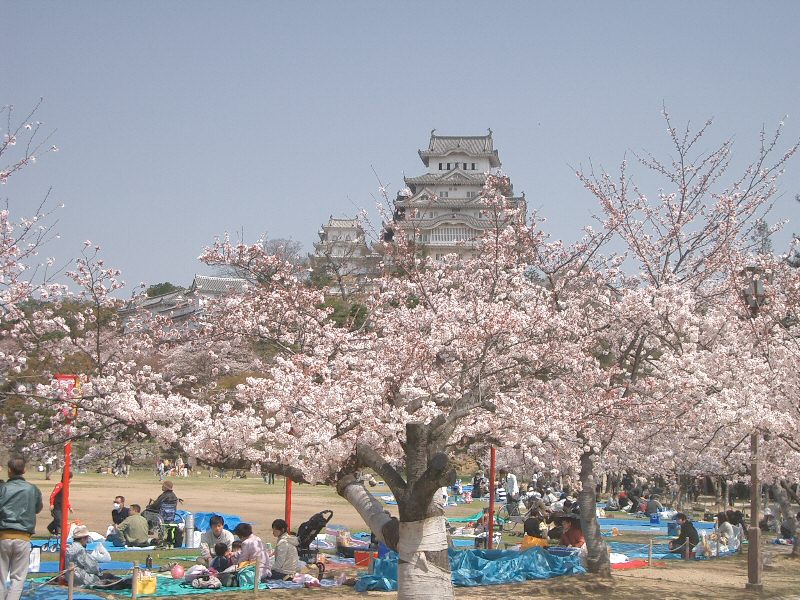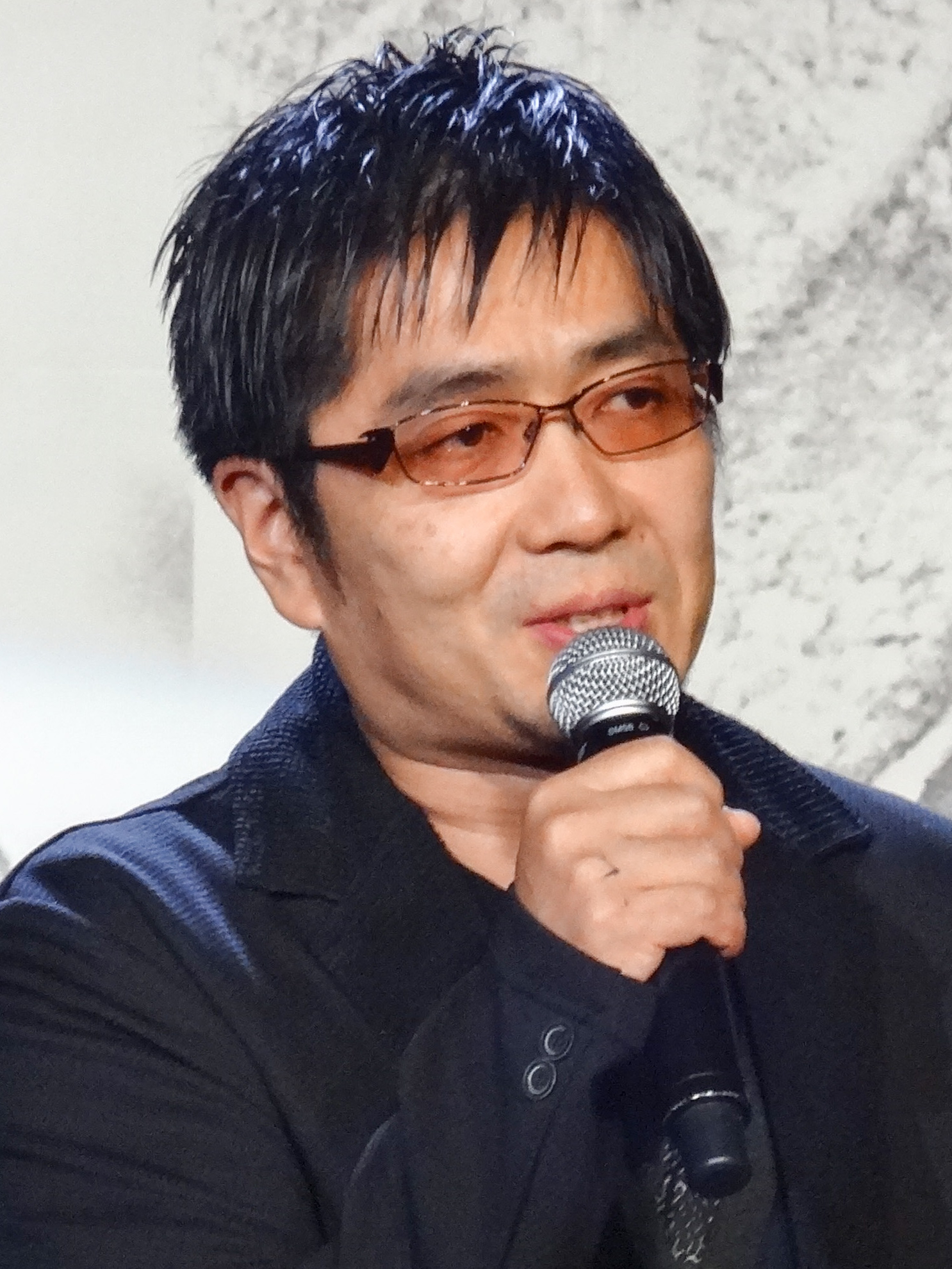|
Jinpūkaku
is a Western-style Renaissance Revival architecture, French Renaissance style home, residence of the Ikeda clan located in Tottori (city), Tottori, Tottori Prefecture, Japan. History Jinpūkaku was commissioned in 1906 by the 14th ''daimyō'' of the Ikeda clan, Nakahiro Ikeda (1877–1948). The residence was designed by the Meiji period architect Katayama Tōkuma (1854–1917), and covers on a site of , and was completed in 1907. Jinpūkaku resembles Tōkuma's Nara National Museum (1894) and Akasaka Palace (1909), and cost 43,335 yen to build. Jinpūkaku was built in close proximity to the ruins of Tottori Castle, which was long controlled by the Ikeda clan, and Kōzen-ji, the temple of the Ikeda family. Association with Emperor Taishō Ikeda ostensibly commissioned Jinpūkaku as a detached residence for the family, but it was likely constructed to house Crown Prince Yoshihito, later Emperor Taishō on his tour of the San'in Region in 1907, the same year construction on ... [...More Info...] [...Related Items...] OR: [Wikipedia] [Google] [Baidu] |
Tottori (city)
is the capital and the largest Cities of Japan, city of Tottori Prefecture in the Chūgoku region of Japan. , the city had an estimated population of 183,383 in 81,732 households and a population density of 240 persons per km². The total area of the city is . Most of the city is within the San'in Kaigan Geopark. Geography The city of Tottori which located in east next to the Chūgoku Mountains, the city flows the Sendai River. It is 300 km by land from Hiroshima city, which is a regional hub city in the Chūgoku region, but on the other hand, it is 180 km from Kobe City, 190 km from Osaka City, and 220 km from Kyoto City. Within Japan the city is best known for the Tottori Sand Dunes which are a popular tourist attraction, drawing visitors from outside the prefecture. The sand dunes are also important as a centre for research into arid agriculture, hosting Tottori University's Arid Land Research Center. Neighboring municipalities Hyōgo Prefecture * Shin'onsen, Hyōgo, ... [...More Info...] [...Related Items...] OR: [Wikipedia] [Google] [Baidu] |
Tottori Prefecture
is a Prefectures of Japan, prefecture of Japan located in the Chūgoku region of Honshu. Tottori Prefecture is the List of Japanese prefectures by population, least populous prefecture of Japan at 538,525 (2023) and has a geographic area of . Tottori Prefecture borders Shimane Prefecture to the west, Hiroshima Prefecture to the southwest, Okayama Prefecture to the south, and Hyōgo Prefecture to the east. Tottori, Tottori, Tottori is the capital and largest city of Tottori Prefecture, with other major cities including Yonago, Kurayoshi, and Sakaiminato. Tottori Prefecture is home to the Tottori Sand Dunes, the largest sand dunes system in Japan, and Mount Daisen, the highest peak in the Chūgoku Mountains. Etymology The word "Tottori" in Japanese is formed from two ''kanji'' characters. The first, , means "bird" and the second, means "to get". Early residents in the area made their living catching the region's plentiful waterfowl. The name first appears in the in the 23rd y ... [...More Info...] [...Related Items...] OR: [Wikipedia] [Google] [Baidu] |
Tottori Station
file:Tottori Station south side ac.jpg, 270px, Tottori Station south exit is a junction passenger railway station located in the city of Tottori (city), Tottori, in Tottori Prefecture, Japan. It is operated by the West Japan Railway Company (JR West). It is located in the Higashihonji-chō district of the city of Tottori. Lines Tottori Station is served by the San'in Main Line, with limited express ''Super Hakuto'' services to and from , ''Hamakaze'' services to and from and ''Super Inaba'' services to and from . It is also served by ''Super Oki'' and ''Super Matsukaze'' limited express services to and from and via . It is located 230.3 kilometers from the terminal station, terminus of the line at . Tottori Station is also a terminus of the Inbi Line and is 73.4 kilometers from the opposing terminus at Station layout The station has two elevated island platforms serving four tracks located on the third floor of the station building. The station has a "Midori no Madoguchi" s ... [...More Info...] [...Related Items...] OR: [Wikipedia] [Google] [Baidu] |
Hanami
is the Japanese traditional custom of enjoying the transient beauty of flowers; in this case almost always mean those of the or, less frequently, trees. From the end of March to early May, cherry trees bloom all over Japan, and around the second week of January on the island of Okinawa. The is announced each year by the Japan Meteorological Agency and watched carefully by those planning ''hanami,'' as the blossoms only last a week or two. In modern-day Japan, ''hanami'' mostly consists of having an outdoor party beneath the sakura during daytime or at night. In some contexts the Sino-Japanese term is used instead, particularly for festivals. ''Hanami'' at night is called . In many places such as Ueno Park temporary paper lanterns are hung for the purpose of ''yozakura''. On the island of Okinawa, decorative electric lanterns are hung in the trees for evening enjoyment, such as on the trees ascending Mt. Yae, near Motobu Town, or at the Nakijin Castle. A more ancient f ... [...More Info...] [...Related Items...] OR: [Wikipedia] [Google] [Baidu] |
Rurouni Kenshin (film)
, also known as ''Rurouni Kenshin Part I: Origins'' in North America, is a 2012 Japanese ''jidaigeki'' action film based on the Rurouni Kenshin, manga of the same name written and illustrated by Nobuhiro Watsuki. Directed by Keishi Ōtomo, the film stars Takeru Satoh and Emi Takei. It focuses on fictional events that take place during the early Meiji era in Japan, telling the story of a countryside wanderer named Himura Kenshin, a former assassin who now offers aid to those in need as atonement for the murders he once committed, as he helps a dojo owner and protects a woman from a ruthless drug lord. Rumors circulated of a live-action adaptation of the manga before it was announced. The ''Sankei Sports'' newspaper reported that the staff aimed to release the film internationally and eventually make a series. This was the first live-action adaptation of the manga. During the production, Watsuki offered his ideas for the movie, which were used in the film. ''Rurouni Kenshin'' wa ... [...More Info...] [...Related Items...] OR: [Wikipedia] [Google] [Baidu] |
Important Cultural Properties Of Japan
An The term is often shortened into just is an item officially classified as Tangible Cultural Property (Japan), Tangible Cultural Property by the Government of Japan, Japanese government's Agency for Cultural Affairs (Ministry of Education, Culture, Sports, Science and Technology) and judged to be of particular importance to the history, arts, and culture of the Japanese people. Classification of Cultural Properties To protect the cultural heritage of Japan, the Law for the Protection of Cultural Properties was created as a under which important items are appropriated as Cultural Properties,In this article, capitals indicate an official designation as opposed to a simple, unofficial definition, e.g "Cultural Properties" as opposed to "cultural properties". thus imposing restrictions to their alteration, repair and export. Besides the "designation system", there exists a , which guarantees a lower level of protection and support to Cultural Properties of Japan, Registered Cultur ... [...More Info...] [...Related Items...] OR: [Wikipedia] [Google] [Baidu] |
Tottori Prefectural Museum
The is a museum in Tottori, Japan, dedicated to the nature, history, folklore, and art of Tottori Prefecture. Its permanent collection includes over three thousand items, and the museum also hosts temporary exhibitions. See also * Tottori City Historical Museum * Inaba Province * Hōki Province was a former province in the area that is today the western half of Tottori Prefecture in the San'in region of Japan. Hōki was bordered by Inaba, Mimasaka, Izumo, Bitchū, and Bingo Provinces. Its abbreviated form name was . In terms of ... References External links Tottori Prefectural MuseumTottori Prefectural Museum at Google Cultural Institute History museums in Japan Museums in Tottori (city) Prefectural museums Museums established in 1972 1972 establishments in Japan {{Japan-museum-stub ... [...More Info...] [...Related Items...] OR: [Wikipedia] [Google] [Baidu] |
Slate
Slate is a fine-grained, foliated, homogeneous, metamorphic rock derived from an original shale-type sedimentary rock composed of clay or volcanic ash through low-grade, regional metamorphism. It is the finest-grained foliated metamorphic rock. Foliation may not correspond to the original sedimentary layering, but instead is in planes perpendicular to the direction of metamorphic compression. The foliation in slate, called " slaty cleavage", is caused by strong compression in which fine-grained clay forms flakes to regrow in planes perpendicular to the compression. When expertly "cut" by striking parallel to the foliation with a specialized tool in the quarry, many slates display a property called fissility, forming smooth, flat sheets of stone which have long been used for roofing, floor tiles, and other purposes. Slate is frequently grey in color, especially when seen ''en masse'' covering roofs. However, slate occurs in a variety of colors even from a single locality; for ... [...More Info...] [...Related Items...] OR: [Wikipedia] [Google] [Baidu] |
Chimney
A chimney is an architectural ventilation structure made of masonry, clay or metal that isolates hot toxic exhaust gases or smoke produced by a boiler, stove, furnace, incinerator, or fireplace from human living areas. Chimneys are typically vertical, or as near as possible to vertical, to ensure that the gases flow smoothly, drawing air into the combustion in what is known as the stack, or chimney effect. The space inside a chimney is called the '' flue''. Chimneys are adjacent to large industrial refineries, fossil fuel combustion facilities or part of buildings, steam locomotives and ships. In the United States, the term '' smokestack industry'' refers to the environmental impacts of burning fossil fuels by industrial society, including the electric industry during its earliest history. The term ''smokestack'' (colloquially, ''stack'') is also used when referring to locomotive chimneys or ship chimneys, and the term ''funnel'' can also be used. The height of a chim ... [...More Info...] [...Related Items...] OR: [Wikipedia] [Google] [Baidu] |
1943 Tottori Earthquake
The occurred in Tottori prefecture, Japan at 17:36 local time on September 10, 1943. Although the earthquake occurred during World War II, information about the disaster was not censored, and relief volunteers and supplies came from many parts of the Empire of Japan, including Manchukuo. The Tottori earthquake had its epicenter offshore from Ketaka District, now part of Tottori, and registered a magnitude of 7.0 on the moment magnitude scale. The seismic intensity was recorded as 6 in Tottori city, and 5 as far away as Okayama on the Inland Sea. The center of Tottori city, with many antiquated buildings was the hardest hit, with an estimated 80% of its structures damaged or destroyed. As the earthquake struck in the evening when most kitchens had fires lit in preparation for the evening meal, fires broke out in 16 locations around the city. With water mains damaged, citizens formed bucket brigades to prevent fires from spreading. The number of fatalities was 1,083, including ... [...More Info...] [...Related Items...] OR: [Wikipedia] [Google] [Baidu] |
Electrified
Electrification is the process of powering by electricity and, in many contexts, the introduction of such power by changing over from an earlier power source. In the context of history of technology and economic development, electrification refers to the build-out of the electricity generation and electric power distribution systems. In the context of sustainable energy, electrification refers to the build-out of super grids and smart grids with distributed energy resources (such as energy storage) to accommodate the energy transition to renewable energy and the switch of end-uses to electricity. The electrification of particular sectors of the economy, particularly out of context, is called by modified terms such as ''factory electrification'', ''household electrification'', ''rural electrification'' and ''railway electrification''. In the context of sustainable energy, terms such as ''transport electrification'' (referring to electric vehicles) or ''heating electrification'' ... [...More Info...] [...Related Items...] OR: [Wikipedia] [Google] [Baidu] |





